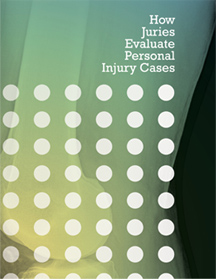The “X” times specials valuation formula
There was a time when insurance adjusters used a method of adding up the medical bills, and assuming they were not unreasonable, multiplying them by three. To that figure, the carrier would add the loss of earnings to arrive at what the insurance company would believe to be an appropriate settlement offer in a soft tissue injury case. For example, a “typical” soft tissue injury case with medical expenses of $3300, assuming no loss of earnings, would have generated a likely settlement offer of $10,000.
Although this formula was used for soft tissue injury evaluations, it was by no means the only method of arriving at value but served as a rough “rule of thumb.”
With the advent of computer programs such as “Colossus,” used by insurers to value cases, this method has been discredited. What typically occurs instead is that the insurance adjuster will assert that he or she used no formula but considers each claim as unique. Nothing could be further from the truth.
The insurance company will have the medical expenses evaluated by a computer program service and then it will likely reduce those bills. In our example, bills of $3,300 would likely be reduced to $2,000. In other words, the insurance company will probably shave a third off and evaluate the claim with an “Alice in Wonderland” type of approach based upon what its own computer program says the medical expenses ought to have been rather than what really exists.
While insurers will never admit to a formula approach, experience shows us that a formula is used with a multiplier of two and, in our hypothetical, an offer of only $4,000 would likely be made.
The scenario that would have resulted in a $10,000 offer years ago now generates an offer of only $4,000. This makes it very difficult to settle the case. A $4,000 offer presupposes the personal injury attorney will be able to secure massive lien reductions from the medical providers and lienholders. This is often not possible. Based upon this hypothetical, after attorney fees and costs, there will be little left over for the victim. The net effect is that many cases are litigated which should not be litigated or, alternatively, unfairness is suffered by the plaintiff if the accident attorney determines it economically not feasible to handle the case, refuses to proceed, and then withdraws from any further involvement.



